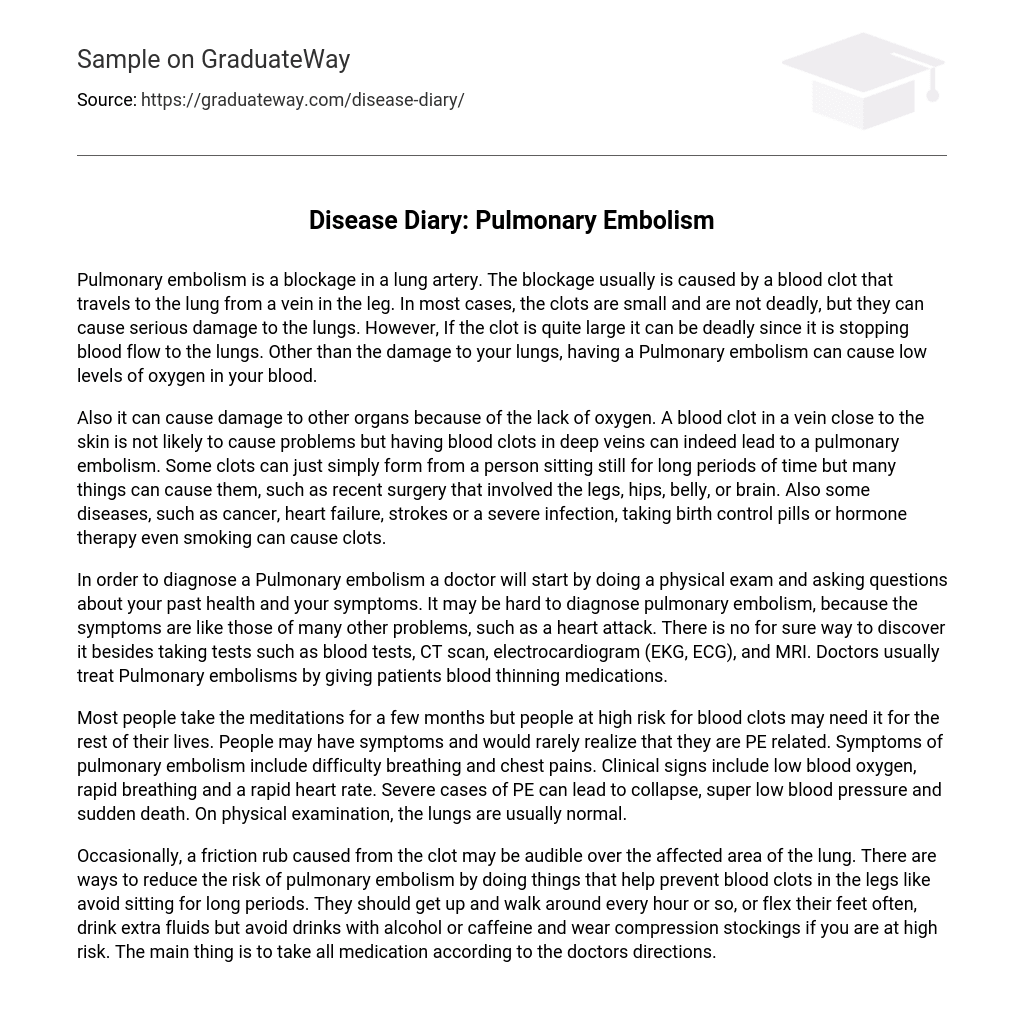Pulmonary embolism is a blockage in a lung artery. The blockage usually is caused by a blood clot that travels to the lung from a vein in the leg. In most cases, the clots are small and are not deadly, but they can cause serious damage to the lungs. However, If the clot is quite large it can be deadly since it is stopping blood flow to the lungs. Other than the damage to your lungs, having a Pulmonary embolism can cause low levels of oxygen in your blood.
Also it can cause damage to other organs because of the lack of oxygen. A blood clot in a vein close to the skin is not likely to cause problems but having blood clots in deep veins can indeed lead to a pulmonary embolism. Some clots can just simply form from a person sitting still for long periods of time but many things can cause them, such as recent surgery that involved the legs, hips, belly, or brain. Also some diseases, such as cancer, heart failure, strokes or a severe infection, taking birth control pills or hormone therapy even smoking can cause clots.
In order to diagnose a Pulmonary embolism a doctor will start by doing a physical exam and asking questions about your past health and your symptoms. It may be hard to diagnose pulmonary embolism, because the symptoms are like those of many other problems, such as a heart attack. There is no for sure way to discover it besides taking tests such as blood tests, CT scan, electrocardiogram (EKG, ECG), and MRI. Doctors usually treat Pulmonary embolisms by giving patients blood thinning medications.
Most people take the meditations for a few months but people at high risk for blood clots may need it for the rest of their lives. People may have symptoms and would rarely realize that they are PE related. Symptoms of pulmonary embolism include difficulty breathing and chest pains. Clinical signs include low blood oxygen, rapid breathing and a rapid heart rate. Severe cases of PE can lead to collapse, super low blood pressure and sudden death. On physical examination, the lungs are usually normal.
Occasionally, a friction rub caused from the clot may be audible over the affected area of the lung. There are ways to reduce the risk of pulmonary embolism by doing things that help prevent blood clots in the legs like avoid sitting for long periods. They should get up and walk around every hour or so, or flex their feet often, drink extra fluids but avoid drinks with alcohol or caffeine and wear compression stockings if you are at high risk. The main thing is to take all medication according to the doctors directions.





